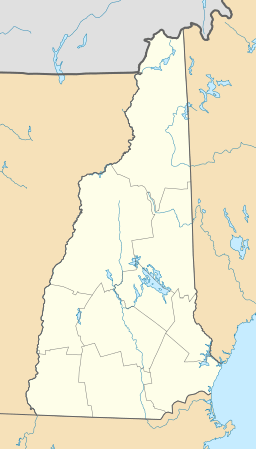Lake Ivanhoe (New Hampshire) facts for kids
Quick facts for kids Lake Ivanhoe |
|
|---|---|
| Round Pond | |
| Location | Carroll County, New Hampshire |
| Coordinates | 43°36′7″N 70°59′25″W / 43.60194°N 70.99028°W |
| Type | Oligotrophic |
| Primary outflows | Groundwater to Great East Lake |
| Catchment area | 455 acres (184 ha) |
| Basin countries | United States |
| Max. length | 3,371 feet (1,027 m) |
| Max. width | 1,851 feet (564 m) |
| Surface area | 68 acres (28 ha) |
| Average depth | 12 feet (3.7 m) Average transparency: 4.7 metres (15 ft) |
| Max. depth | 20 feet (6.1 m) |
| Water volume | 992,000 cubic metres (35,000,000 cu ft) |
| Residence time | 1.1 years |
| Shore length1 | 8,858 feet (2,700 m) |
| Surface elevation | 571 feet (174 m) |
| Settlements | Wakefield |
| 1 Shore length is not a well-defined measure. | |
Lake Ivanhoe, also known as Round Pond, is a beautiful lake found in Carroll County, New Hampshire, in the United States. This lake is quite unique because it doesn't have typical streams flowing into or out of it. Long ago, a small stream did connect Lake Ivanhoe to Great East Lake. However, building projects filled in that stream. Now, the water from Lake Ivanhoe mostly flows underground to Great East Lake.
Contents
What is Lake Ivanhoe Like?
Lake Ivanhoe is a relatively small lake. It covers an area of about 68 acres. The lake is about 3,371 feet long and 1,851 feet wide. Its deepest point is around 20 feet, with an average depth of 12 feet. The water in Lake Ivanhoe is quite clear. On average, you can see about 4.7 meters (or about 15 feet) down into the water.
How Does Water Move in Lake Ivanhoe?
Even without surface streams, water still moves through Lake Ivanhoe. Water enters the lake from rain and groundwater. It leaves the lake primarily through groundwater flow. This groundwater eventually makes its way to Great East Lake. The water in Lake Ivanhoe completely replaces itself about every 1.1 years. This means the water you see today will be mostly new water in just over a year.
Is Lake Ivanhoe's Water Quality Good?
The New Hampshire Department of Environmental Services checks the water quality of lakes. Lake Ivanhoe is currently listed as "Potentially Impaired." This means there are some concerns about its water quality. The main reason for this listing is the amount of phosphorus in the lake. Phosphorus is a nutrient that can cause too much algae to grow.
Why is Phosphorus a Concern?
Lake Ivanhoe is classified as an "oligotrophic" lake. This type of lake naturally has very low levels of nutrients like phosphorus. When phosphorus levels get too high, it can lead to problems. Too much phosphorus can cause algae blooms, which can make the water cloudy. These blooms can also reduce the amount of oxygen in the water. This can harm fish and other aquatic life.
What is the Lake Ivanhoe Watershed?
A watershed is the area of land where all the water drains into a specific lake or river. The Lake Ivanhoe watershed is about 455 acres in size. A large part of this area, about 64%, is covered by forests. About 17% of the watershed has been developed with buildings. Most of the shoreline around Lake Ivanhoe has houses and camps. About 66% of the shoreline has these types of homes. A large number of these buildings, 88%, are very close to the water's edge. They are within 50 feet of the lake.
How Do We Monitor Lake Ivanhoe's Health?
Scientists have been keeping an eye on Lake Ivanhoe's water quality since 1981. They collect different types of data to understand the lake's health.
What Data Do Scientists Collect?
- Secchi Disk Transparency: This measures how clear the water is. Scientists have 16 years of this data. The average transparency is 4.7 meters.
- Total Phosphorus (TP): This measures the amount of phosphorus in the water. They have 17 years of TP data. The average phosphorus level is 8.0 parts per billion (ppb).
- Chlorophyll-a (Chl-a): This measures the amount of algae in the water. They have 16 years of Chl-a data.
- Dissolved Oxygen (DO): This measures the amount of oxygen dissolved in the water. Fish and other aquatic animals need oxygen to survive. They have 14 years of DO data.
By looking at all this information, scientists can track changes in the lake over time. This helps them understand what might be impacting the lake's health. It also helps them suggest ways to protect Lake Ivanhoe for the future.



